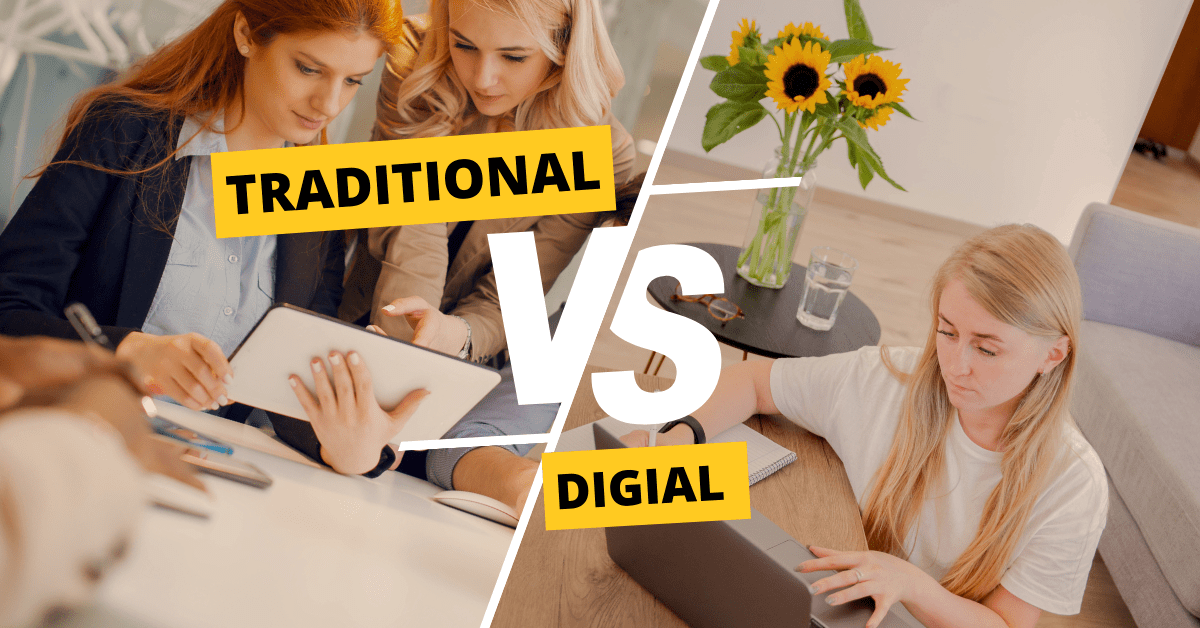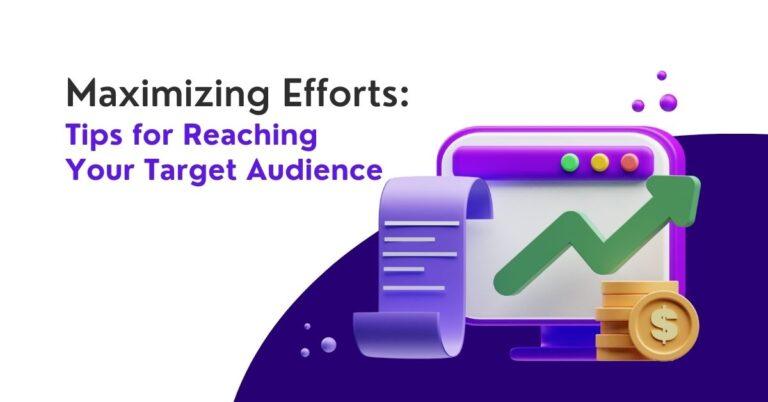Welcome to “From Traditional to Digital: The Marketing Revolution”. In this blog post, we will explore the transformation of marketing practices from traditional methods to digital strategies. With advancements in technology and changing consumer behavior, businesses have had to adapt their marketing approaches to stay competitive in the modern digital era.
Evolution of Traditional Marketing
Overview of traditional marketing tactics
Traditional marketing encompassed various tactics, including print media advertising, broadcast media advertising, out-of-home advertising, direct mail campaigns, and telemarketing. These methods were widely used before the digital era and played a crucial role in reaching consumers. Print media advertising involved placing ads in newspapers and magazines, while broadcast media advertising utilized television and radio platforms to promote products or services. Out-of-home advertising involved billboards and posters strategically placed in high-traffic areas, and direct mail campaigns involved sending marketing materials directly to consumers’ mailboxes. Telemarketing involved making phone calls to potential customers to pitch products or services.
Limitations and challenges of traditional marketing
Traditional marketing methods faced certain limitations and challenges. The high costs associated with traditional advertising meant that small businesses often found it difficult to compete with larger companies. Additionally, the reach of traditional marketing methods was limited, making it difficult to target specific audience segments effectively. Traditional marketing also lacked interactivity and personalization, which hindered the ability to establish meaningful connections with consumers. Another challenge was the inability to track campaign performance in real-time and measure return on investment (ROI). These limitations prompted businesses to explore new avenues for reaching their target audiences.
Rise of Digital Marketing
Digital marketing is the use of digital technologies and platforms for the promotion of products or services. It offers various benefits over traditional marketing methods. One key advantage is the wider reach and global access to target audiences. With the internet and social media, businesses can connect with potential customers all over the world. Digital marketing is also cost-effective compared to traditional methods, making it ideal for small and medium-sized businesses with limited marketing budgets. Additionally, digital marketing enables precise targeting of specific demographics and interests, allowing businesses to tailor their messaging accordingly. Furthermore, digital marketing provides real-time tracking and data analysis, enabling businesses to measure campaign performance and make data-driven decisions.
Key digital marketing channels and strategies
Digital marketing encompasses various channels and strategies that businesses can leverage to connect with their target audience:
- Search Engine Optimization (SEO): Optimizing websites to rank higher in search engine results pages and increase organic traffic.
- Social media marketing: Utilizing social media platforms such as Facebook, Instagram, Twitter, and LinkedIn to engage with target audiences and promote products or services.
- Content marketing: Creating valuable and relevant content, such as blog posts, videos, or infographics, to attract and engage potential customers.
- Email marketing: Sending targeted emails to subscribers to build relationships, generate leads, and drive conversions.
- Influencer marketing: Collaborating with influential individuals or bloggers who have a significant following to promote products or services.
- Pay-per-click (PPC) advertising: Displaying targeted advertisements on search engines or websites and paying only when users click on the ad.
- Mobile marketing: Utilizing mobile devices for marketing purposes, such as SMS marketing or mobile app advertising.
Comparison Traditional VS Digital Marketing
When comparing traditional and digital marketing, several key differences arise. Traditional marketing tends to cast a wider net, targeting mass audiences through mass media. On the other hand, digital marketing allows for precise targeting based on demographics, interests, and online behavior. This ability to pinpoint specific audience segments enhances personalization and engagement.
Digital marketing also offers greater branding opportunities. Through social media platforms, businesses can build brand awareness, interact with customers, and cultivate a loyal following. Traditional marketing methods often lack this level of engagement.
The Digital Marketing Advantage
Digital marketing has offered countless success stories across various industries. For example, the “Share a Coke” campaign by Coca-Cola allowed customers to personalize coke cans with their names, driving customer engagement and social media sharing. Another successful digital marketing campaign was Old Spice’s viral advertising campaign, which utilized humor and social media to generate brand awareness and increase sales. These examples demonstrate how creative and innovative digital marketing strategies can help businesses achieve their marketing goals.
Benefits of digital marketing over traditional methods
Digital marketing provides several advantages over traditional marketing methods:
- Enhanced targeting capabilities: Digital marketing allows businesses to precisely target specific demographics and interests, ensuring that marketing efforts reach the right audience.
- Cost-efficiency and measurable ROI: Digital marketing tends to be more budget-friendly than traditional methods, and the ability to track and analyze data allows businesses to measure the effectiveness of their campaigns and adjust accordingly.
- Real-time engagement and interactivity: Digital marketing enables real-time interaction with customers through social media platforms, email campaigns, and live chats, fostering engagement and building relationships.
- Improved brand visibility and customer engagement: Digital marketing provides businesses with a 24/7 presence and enables them to reach customers globally, expanding brand visibility and fostering meaningful connections.
- Opportunities for data-driven decision-making: With digital marketing, businesses have access to valuable data and insights that can inform marketing strategies, helping them optimize their campaigns for better results.
The Benefits for Businesses
The shift to digital marketing has brought numerous benefits for businesses of all sizes and industries.
Increased reach and brand exposure: Digital marketing allows businesses to expand their target audience globally, regardless of their size or location. With the ability to reach potential customers across various digital platforms, businesses can build global brand recognition and awareness.
Cost-effectiveness and measurable results: Digital marketing offers cost-effective advertising solutions, especially when compared to traditional marketing channels. Online platforms provide businesses with the ability to set budgets, track campaign costs, and analyze the impact of their marketing efforts. Analytical tools help businesses measure key performance indicators and optimize campaigns for better results.
Enhanced customer targeting: Digital marketing enables businesses to target specific demographics based on interests, behaviors, location, and other relevant factors. This level of targeting allows for personalized messaging and improved conversion rates, leading to higher customer engagement and loyalty.
Challenges and Opportunities in the Digital Era
While digital marketing offers numerous advantages, businesses face challenges when transitioning from traditional methods. Some struggle to adapt to new technologies or may lack the necessary resources to implement effective digital strategies. However, these challenges also present opportunities for businesses to learn and grow.
With the ever-expanding digital landscape, businesses have the chance to achieve unparalleled reach, engagement, and conversion rates. The ability to target specific audiences and track campaign performance allows for continuous optimization and improvement.
The Impact on Consumers
The marketing revolution has not only transformed the way businesses operate but has also had a significant impact on consumers.
Availability of information and product research: Digital channels have empowered consumers to make informed purchase decisions. Online reviews, comparisons, and interactive content enable consumers to gather information and conduct product research before making a purchase. This increased transparency has provided consumers with more control over their buying decisions.
Personalized experiences: Digital marketing allows businesses to tailor messages and offerings to individual consumers. With the ability to collect and analyze data, businesses can create personalized experiences, making customers feel valued and understood. Personalization leads to better customer satisfaction and increased loyalty.
Greater interaction and engagement: The rise of social media platforms and two-way communication channels has fostered dialogue between brands and consumers. Consumers can now interact directly with businesses, providing feedback, asking questions, and even becoming brand advocates. This increased interactivity has transformed the relationship between businesses and consumers, leading to improved customer satisfaction and brand loyalty.
Case Studies
Let’s explore a couple of case studies to illustrate the successful transition from traditional to digital marketing:
Case Study 1: Nike’s “Just Do It” Campaign
Nike’s iconic “Just Do It” campaign initially relied on traditional advertising methods like TV commercials and billboards. However, they effectively transitioned to digital marketing by leveraging social media and user-generated content. By encouraging customers to share their personal fitness stories on social media platforms using the hashtag #JustDoIt, Nike created a digital movement. This strategy strengthened brand loyalty and engagement, fostering a sense of empowerment within their target audience.
Case Study 2: Amazon’s Personalized Recommendations
Amazon, originally an online bookstore, transformed into the e-commerce giant it is today by embracing digital marketing strategies. One key tactic they implemented was personalized recommendations based on users’ browsing and purchase history. By leveraging customer data and algorithms, Amazon delivers individualized content and product suggestions, enhancing the user experience and driving sales.
Can digital marketing replace traditional marketing?
In today’s rapidly evolving digital era, businesses are constantly looking for effective ways to reach and engage with their target audience. This has led to a rise in digital marketing, which refers to advertising, promoting, and communicating with customers through digital channels like the internet, social media, email, and mobile applications.
On the other hand, traditional marketing refers to traditional advertising methods such as print media (newspapers and magazines), radio, television, billboards, and direct mail. These methods have been used for centuries and have proven to be quite successful.
Now, the question arises: Can digital marketing replace traditional marketing? The short answer is no. While digital marketing has become incredibly popular and effective in recent years, it doesn’t necessarily eliminate the need for traditional marketing altogether.
Both digital and traditional marketing have their own unique advantages and can work hand-in-hand to achieve marketing goals. Digital marketing offers the advantage of being highly targeted, cost-effective, and providing real-time data and analytics. It allows businesses to customize their approach based on customer behavior, interests, and demographics. Moreover, it provides a platform for building relationships and fostering customer engagement.
On the other hand, traditional marketing channels still hold value. Print ads can be seen in physical spaces where digital media might not reach, like billboards or magazines. Television and radio adverts have the ability to reach a vast audience, including those who may not be actively engaged online. Additionally, some people still prefer receiving promotions or information in a physical format, such as direct mail or brochures.
In conclusion, digital marketing has revolutionized the way businesses promote themselves, but it does not completely replace traditional marketing methods. The key lies in striking a balance and utilizing both digital and traditional marketing strategies to effectively connect with your target audience and achieve your marketing objectives.
The Future of Marketing
The marketing revolution shows no signs of slowing down. As technology continues to advance and consumer behaviors evolve, digital marketing is predicted to dominate the industry.
Businesses must adapt to the changing landscape by embracing digital marketing strategies. Staying ahead of the curve and utilizing the latest tools and platforms will be crucial for continued success. Ignoring or underestimating the power of digital marketing can put businesses at a disadvantage in today’s competitive marketplace.
In conclusion, the marketing revolution from traditional to digital has transformed the way companies interact with their target audience. Traditional marketing techniques, while still relevant in certain contexts, have been overshadowed by the advantages and capabilities offered by digital marketing. Businesses that embrace and effectively utilize digital strategies can expect increased reach, enhanced targeting, cost-effectiveness, and improved customer engagement. Consumers, in turn, benefit from greater access to information, personalized experiences, and increased opportunity for interaction. The future of marketing undoubtedly lies in the digital realm, making it imperative for businesses to adapt and embrace this revolution.
Thank you for reading! Share your experiences and questions in the comments below!




